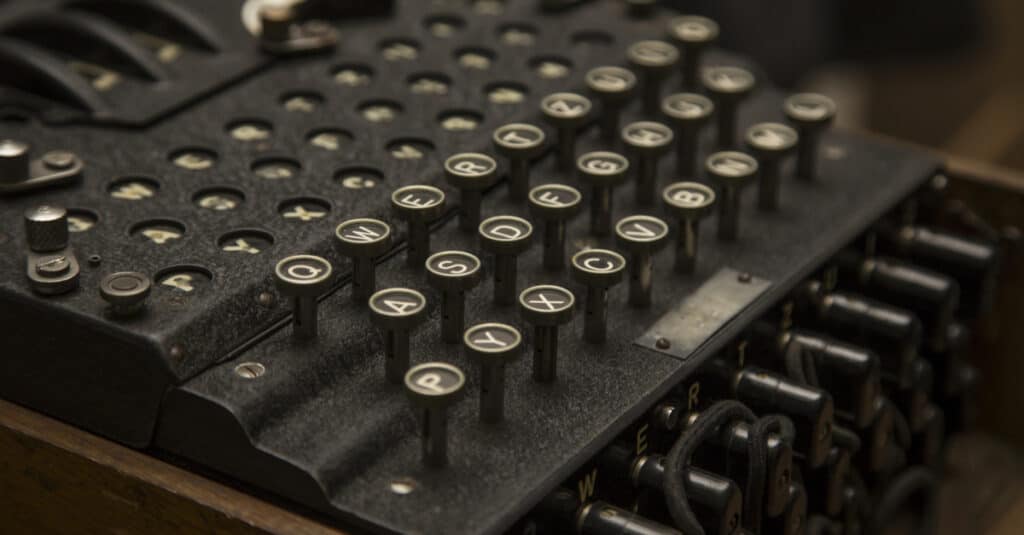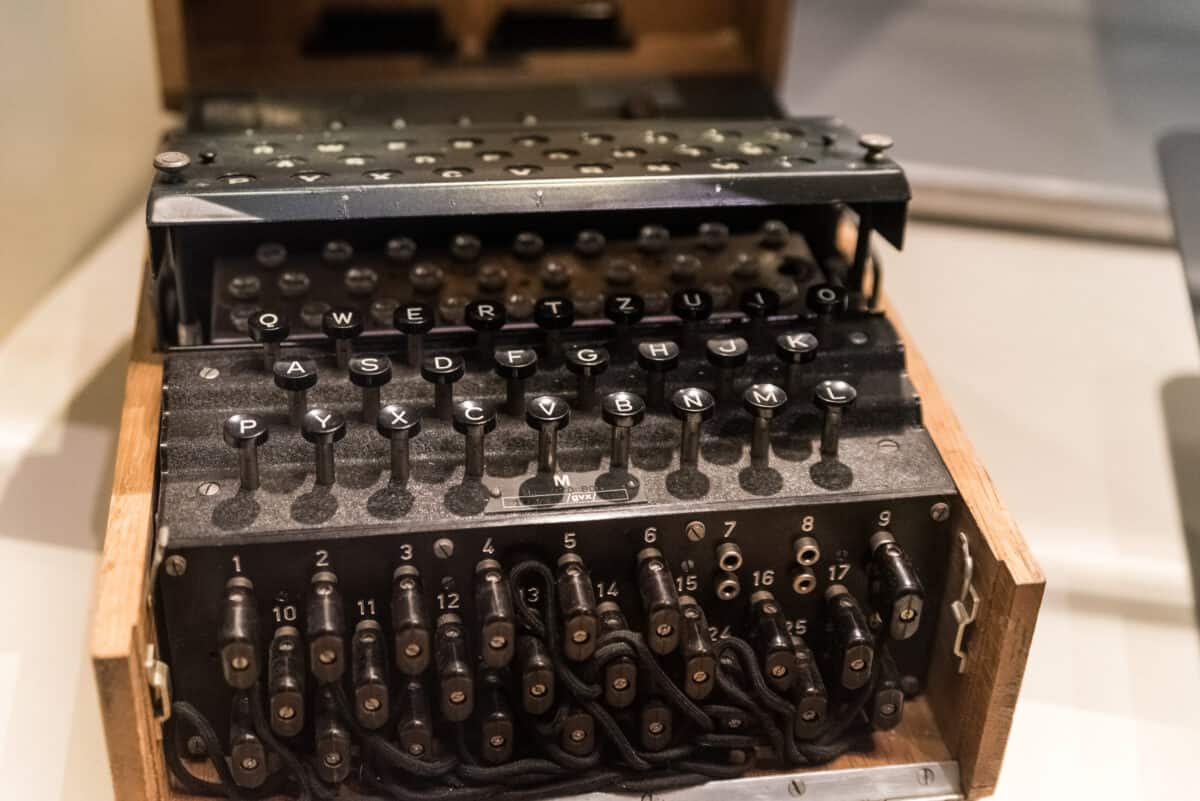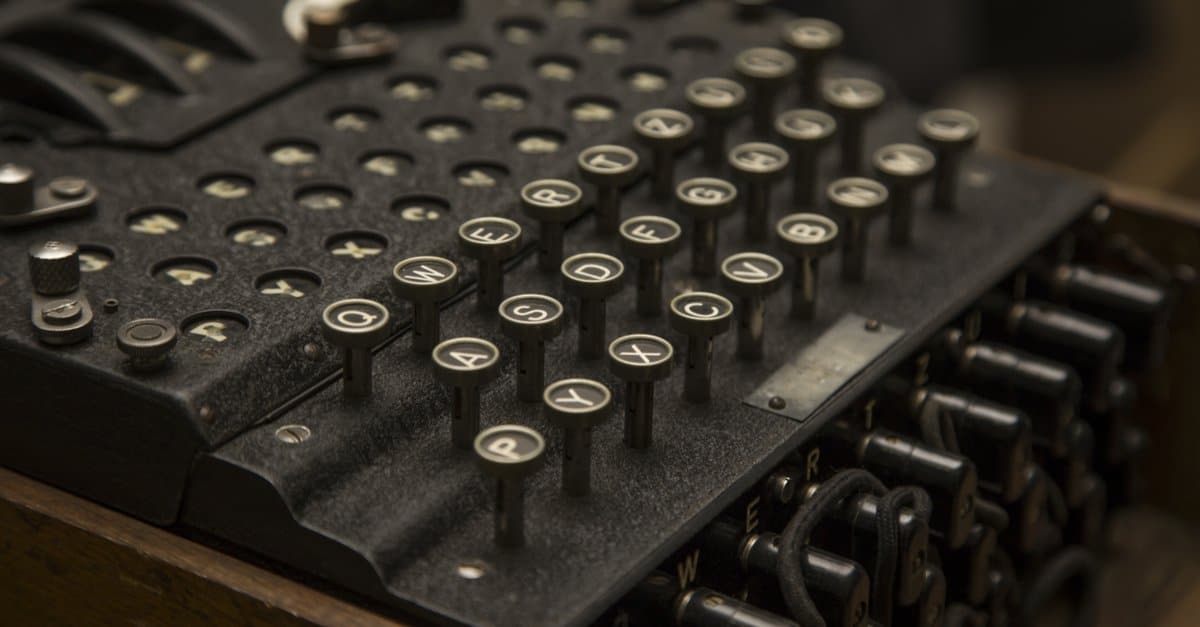The Enigma Machine was an electro-mechanical cipher device invented by German engineer Arthur Scherbius in 1918. The device, which resembled a manual typewriter, used a series of rotors to scramble messages. While Scherbius intended for the device to be used for commercial purposes, the Nazis used it before and during World War II to encode strategic messages from German command to Nazi troops. The recipient had to have an Enigma Machine as well in order to unscramble the message.
The Enigma Machine History
Full details about the Enigma Machine were lost for many decades until an old manuscript was found in 2003. The paper written by Karl de Leeuw described the Enigma Machine, detailing some changes that were made by its inventor, Arthur Scherbius.
Quick Facts
- Created
- 1918
- Creator (person)
- Arthur Scherbius
- Original Use
- Encryption
- Cost
- N/A
The first patents for the invention were filed in 1918 by co-founders Scherbius and Ritter of a German firm that created the device for the purpose of encoding secretive types of messages that would be used by businesses and governments. At that time, the inventors had no idea that the encoding machine would become a pivotal factor in the outcome of War World II.
Historians believe that the inventors named the device after an orchestral musical composition by Edward Elgar entitled “Enigma Variations.” The encoding machines were first sold under the brand name “Enigma” beginning in 1923. The device was used primarily by commercial industries during the 1920s, and some governments began to use it previous to and during World War II, the most notable of which was Nazi Germany.
The Enigma Machine: How It Worked
The Enigma Machine was a relatively simple device compared to the technology of today. On the outside, it could easily be mistaken for a manual typewriter from the early 20th Century. Despite its mundane appearance, the code encryption produced by the machine was nearly impossible to decipher.
The cryptography machine would switch the letters that a person types to different ones so that a person without the decryption key would only see a scramble of meaningless letters known as a polyalphabetic substitution cipher. The same machine was also needed by the intended recipients of the coded communications to unscramble the messages.

The Enigma Machine: Historical Significance
The historical significance of the Enigma Machine centers mostly on its usage for encoding Nazi strategic messages and the efforts of the British code breakers to crack the Enigma Code. The invention of the Enigma Machine was also one of the first major steps in the advancement of modern encryption techniques.
During World War II, German command used the encryption machine to prevent the Ally forces from deciphering messages that were broadcast to Nazi forces. Allied forces quickly realized that decrypting these messages could give them a decisive edge to expose the flaws in the Nazi reliance on coded messages for security.
Poland, under the leadership of mathematician Marian Rejewski, broke the Enigma code before the war began. In 1939, they shared this knowledge with the British decoders because it was clear that a German invasion was imminent. However, prior to the onset of the war, the Nazis realized that there were flaws in their secrecy, and they increased the security of their communications by changing the cipher system every day. The problem for the Allies then became a matter of breaking the code quickly enough to keep pace with the daily changes in encryption patterns.
A secret team of British decoders known as Utra led by mathematician Alan Turing was tasked with cracking the Enigma code. Turing devised a plan to create a device that could perform the code-breaking math much faster and with fewer flaws than a team of hundreds of code-breakers could.
Without this machine, the Enigma code could not be deciphered in time before it was changed on the following day. The decoding machine invented by Alan Turing that led to the invention of the modern computer was called “The Bombe.”

The Bombe operated with a method that Turing referred to as “Turingery.” Its design was based on the mechanical operation of the Enigma machine, and the solution depended on learning the rotor positions on the device that produced a new scrambling pattern each day.
When the rotor positions that were set on the Enigma Machine were deciphered, the code breakers could use the rotor settings on an Enigma Machine to read the encrypted messages. During the war, Turing visited the United States, and the information that he shared helped the U.S. Navy for their purpose of creating a simulator of the Bombe.
By the end of World War II, it was calculated that the Bombe enabled Allied forces to defeat the Axis forces years earlier than they could have otherwise. Without the device created by Turing, the war would have cost millions more lives.
After the war, Turing continued to work on an idea for a “universal Turing machine” which was the first theoretical idea for a true working computer. His published design for the “Automatic Computing Engine” is believed to be the precursor to the first functional computers that emerged several years later.
The History of the Enigma Machine in Film
In 2014, a thriller entitled The Imitation Game was released theatrically in the United States. This film, starring Benedict Cumberbatch in the lead role, recounts the story of Turing’s role in cracking the Enigma Code.
The image featured at the top of this post is ©Bosko/Shutterstock.com.

